Five essential tools will help you create professional-quality perfumes at home. You'll need precise measuring equipment like digital scales and graduated cylinders for accurate blending. Store your creations in dark glass containers with tight-fitting lids to preserve freshness. Don't skip safety gear including gloves and goggles. Add glass stirring rods and metal spatulas for mixing, plus blotting paper for testing. Understanding these fundamentals sets the stage for your aromatic journey.
Precise Measurement Tools for Perfect Scent Ratios
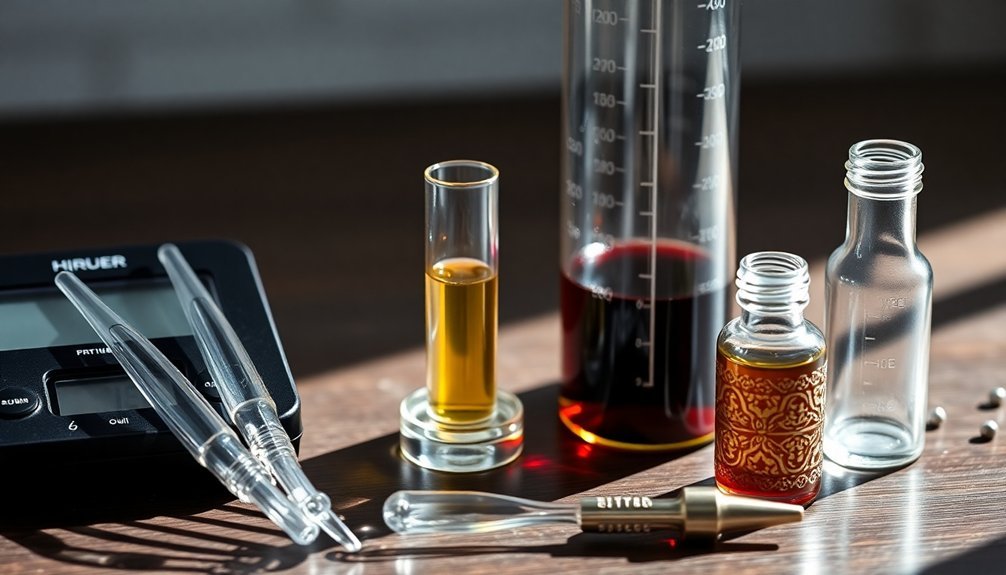
Three essential categories of measurement tools form the foundation of successful perfume making: precision scales, liquid measuring instruments, and specialized droppers.
You'll need a digital scale that measures to the hundredths (0.00) and can handle up to 200 grams, with taring capability to subtract container weight.
For liquids, invest in borosilicate glass beakers and graduated cylinders to guarantee accurate measurements of your ingredients. Standard Pyrex measuring cups work well for initial measurements. Amber glass bottles are crucial for storing your final mixed formulas to maintain quality.
Don't forget disposable pipettes and droppers for transferring small amounts of aromatics without cross-contamination.
You'll want to sterilize these tools with ethanol before use. Testing strips complement these tools by providing a neutral surface for evaluating your fragrances without interference from skin chemistry.
Essential Storage Vessels and Glass Containers
Choosing the right glass containers stands at the heart of successful perfume making. You'll want to select bottles that protect your creations while guaranteeing their longevity. Glass remains the top choice due to its non-reactive properties and superior ability to preserve fragrances. A well-designed DIY organizer system can help display and protect your valuable perfume collection.
| Container Type | Best Use |
|---|---|
| Dark Glass | Light-sensitive oils |
| Three-Piece | Professional blends |
| Decorative | Gift presentations |
| Clear Polished | Display purposes |
When selecting your storage vessels, opt for tight-fitting lids to prevent oxidation. You'll find various sizes and styles available, from bamboo-inspired designs to fashionable car perfume bottles. Always label your containers with blend names and creation dates. Before use, inspect each bottle for defects and guarantee thorough cleaning to maintain your perfume's integrity and prevent cross-contamination.
Safe Handling Equipment and Protective Gear
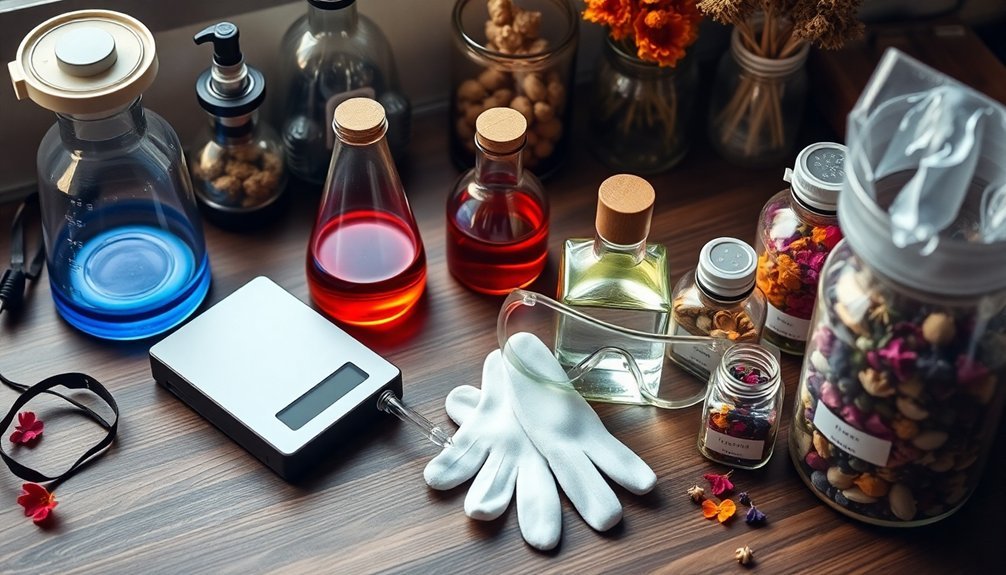
Safety should be your top priority when crafting perfumes, as many essential oils and aromatic compounds can irritate skin and eyes.
You'll need proper protective gear to handle ingredients safely and comfortably. Start with a well-fitted lab coat or protective apron to shield your clothing from spills and stains.
Don't forget to wear safety goggles to protect your eyes from splashes and fumes while mixing ingredients. Nitrile gloves are essential – they're more chemical-resistant than latex and offer better dexterity for precise measurements.
Always work in a well-ventilated area, and keep an eye wash station nearby. If you're handling concentrated materials, consider using a face shield for extra protection. Consider using a protective mask or respirator when working with strong aromatic materials to prevent inhalation of potent fumes.
Remember to inspect your gloves regularly for damage and replace them when necessary to maintain effective protection.
Mixing and Blending Instruments
When creating your own perfumes, you'll need a specific set of mixing and blending instruments to achieve professional-quality results.
Glass stirring rods are essential for mixing your fragrance compounds without risking contamination, while metal spatulas help you handle solid and waxy ingredients with precision.
For more advanced blending techniques, you'll want to take into account these key tools:
- A magnetic stirrer with magnet bars for thorough, consistent mixing
- An offset spatula for specialized techniques like enfleurage
- Stainless steel funnels for clean, precise liquid transfers
Using high-quality mixing instruments guarantees your perfume blends are properly combined and free from contamination.
The right tools also help you maintain consistent results across different batches, making your perfume-making process more reliable and professional.
Testing Materials and Scent Documentation Tools
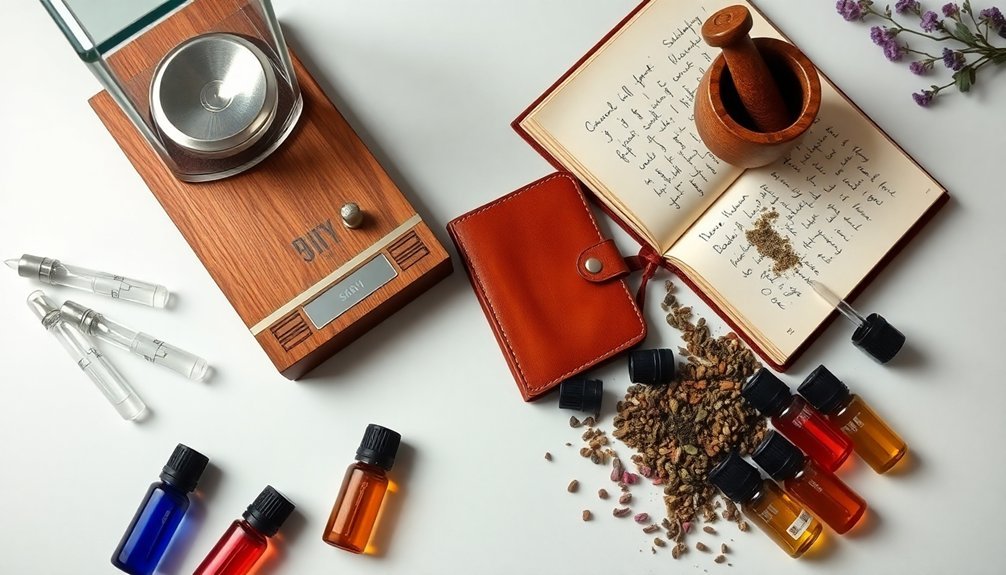
Professional perfume testing requires a carefully selected set of materials and documentation tools to evaluate your fragrances accurately.
You'll need high-absorbency watercolor or blotting paper cut into uniform strips, along with basic measuring tools like rulers and scissors. When testing, dip one end of the strip into your perfume sample and wave it gently to release the scent.
To track your perfume-making journey, maintain a detailed documentation system. Keep a logbook to record your observations, use labels to identify different fragrances, and consider photographing your work to track visual changes.
Store your test strips in a cool, dry place and replace them every few months. When comparing fragrances, test multiple samples side-by-side under consistent conditions to guarantee reliable results.
Frequently Asked Questions
How Long Do Homemade Perfumes Typically Last Before Expiring?
Your homemade perfumes will typically last 1-3 years if they're alcohol-based and stored properly. If you've made an oil-based perfume, you'll need to use it within about a year.
Can I Use Plastic Containers Instead of Glass for Storing Perfumes?
You shouldn't use plastic containers for perfumes, as they can leach chemicals and alter your fragrance's composition. Stick with glass bottles – they'll provide better protection against light, air, and chemical interactions.
What Temperature Should I Maintain While Storing My Perfume-Making Ingredients?
You'll want to maintain a consistent temperature between 60-70°F (15-21°C) for your perfume ingredients. Don't let them get warmer than 70°F to prevent evaporation, and avoid extreme cold temperatures.
How Do I Properly Clean and Sanitize My Perfume-Making Tools?
You'll need to wash your tools with soap and water, or use rubbing alcohol for quick sanitizing. Don't forget to rinse thoroughly and dry completely. For stubborn residues, try a vinegar solution or rice scrub.
Which Tools Are Absolutely Essential for Beginners on a Budget?
You'll need digital scales, glass beakers, measuring droppers, dark glass bottles, safety gear (gloves and goggles), fragrance blotters, and a notebook. Start with these basics to create perfumes safely and accurately.
In Summary
Now you're equipped with the essential tools to begin your perfume-making journey. Remember to carefully measure your ingredients, store them properly, protect yourself with safety gear, blend with precision, and document your successful formulas. Whether you're creating subtle florals or bold orientals, these five tools will help you craft unique, professional-quality fragrances from the comfort of your home. Start experimenting today!

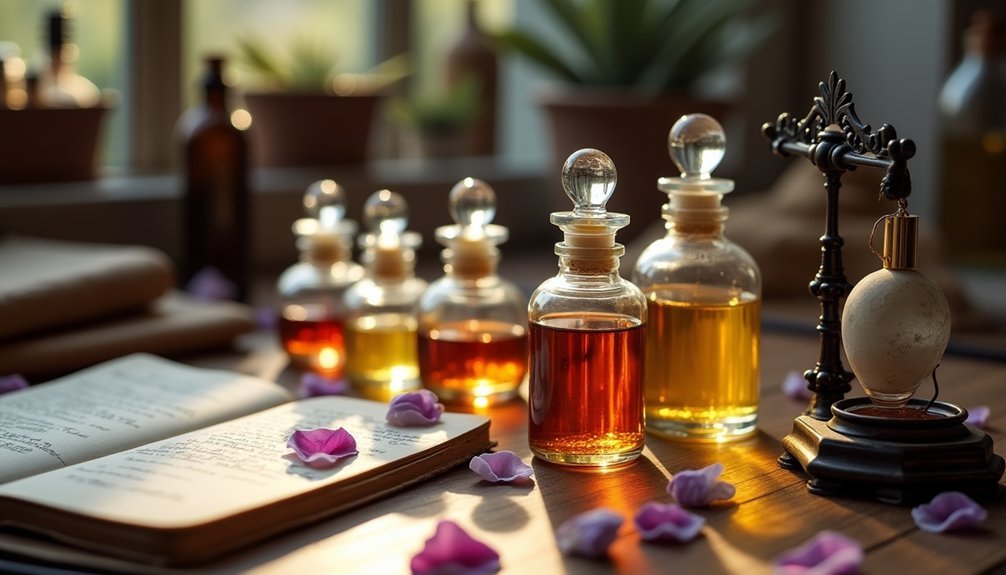
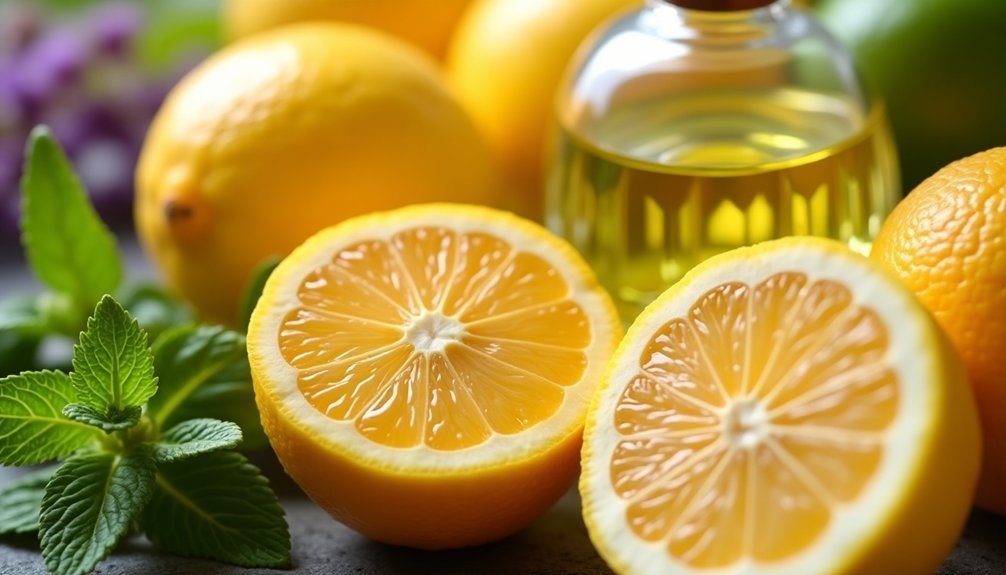
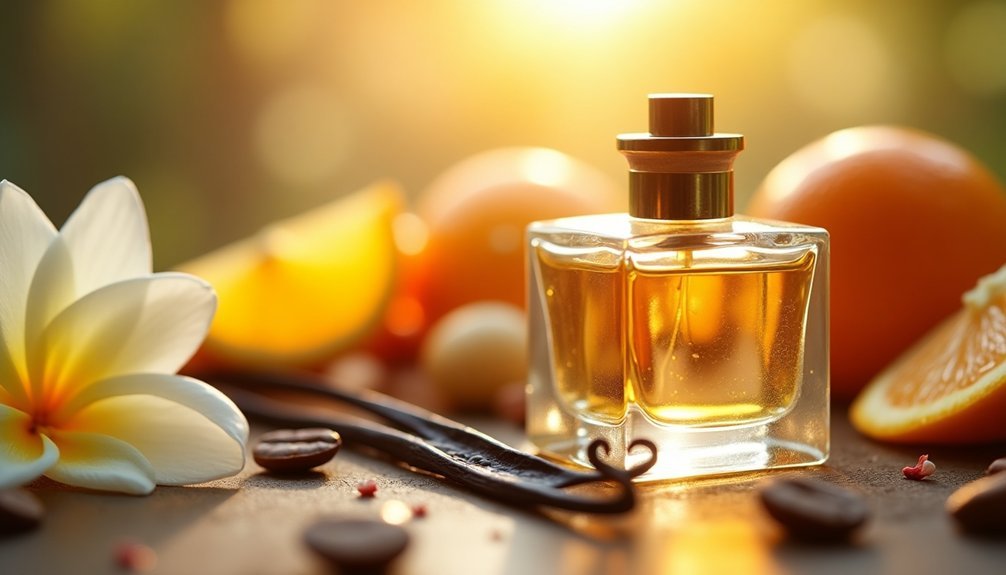

Leave a Reply